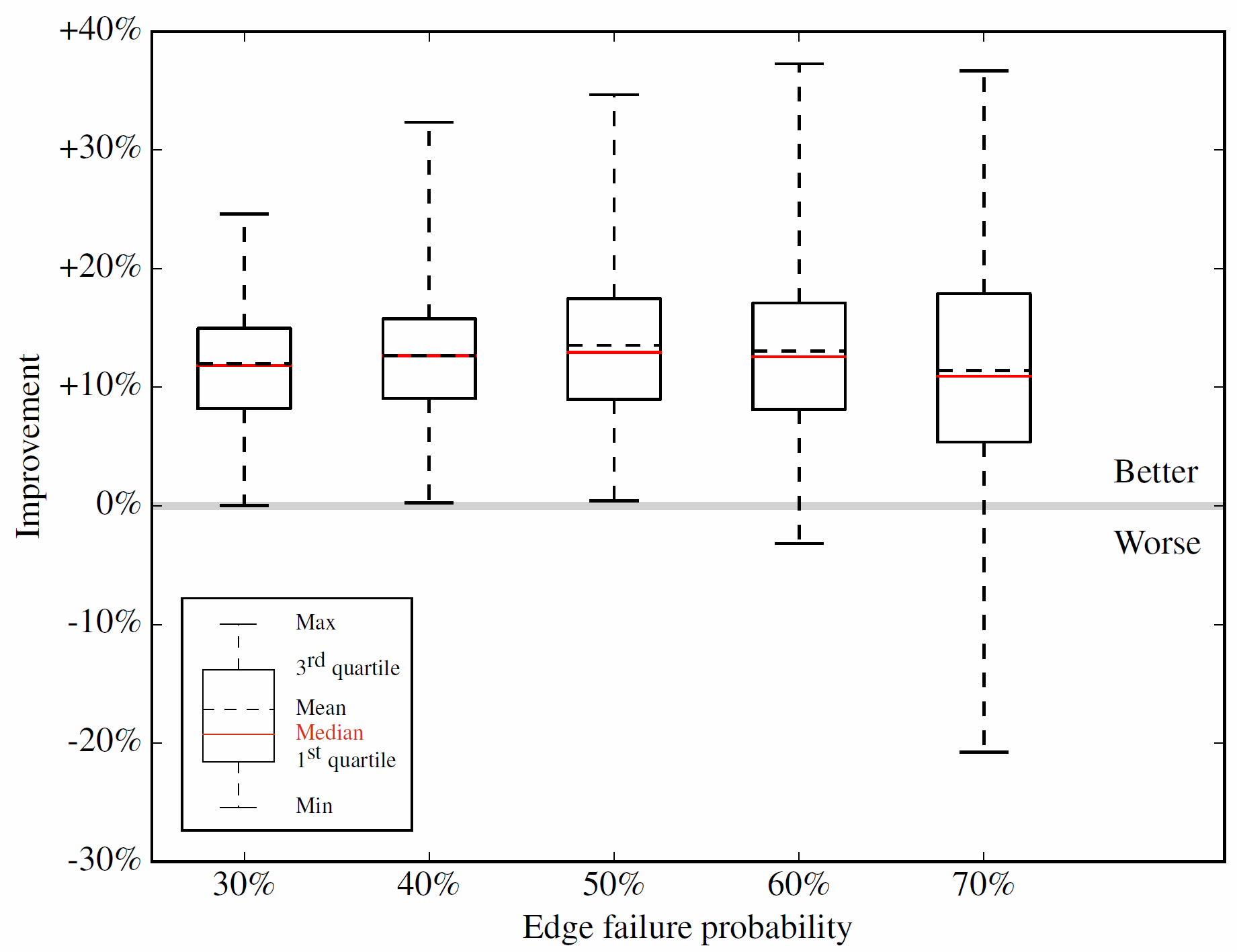A Novel KPD Mechanism to Increase Transplants When Some Candidates Have Multiple Willing Donors.
T. Sandholm,1 G. Farina,1 J. Dickerson,2 R. Leishman,3 D. Stewart,3 R. Formica,4 C. Thiessen,4 S. Kulkarni.4
1Carnegie Mellon U, Pittsburgh
2U of Maryland, College Park
3UNOS, Richmond
4Yale U, New Haven
Meeting: 2017 American Transplant Congress
Abstract number: D309
Keywords: Donation, Donors, Kidney, Kidney transplantation, unrelated
Session Information
Session Name: Poster Session D: Non-Organ Specific: Economics, Public Policy, Allocation, Ethics
Session Type: Poster Session
Date: Tuesday, May 2, 2017
Session Time: 6:00pm-7:00pm
 Presentation Time: 6:00pm-7:00pm
Presentation Time: 6:00pm-7:00pm
Location: Hall D1
Purpose: Current kidney exchanges such as the OPTN Kidney Paired Donation (KPD) program allow candidates to list multiple willing donors, but only one will donate if the candidate is matched. There are cases where multiple donors would be willing to donate if it resulted in their intended candidate being transplanted. This report studies the effects of having two donors donate in such cases.
Methods: A simulation study was conducted, where random orders of the actual OPTN KPD donor-candidate pairs (some of which have multiple listed donors) and non-directed donors were chosen to arrive dynamically at the realistic rate. For the status quo system in the simulation, the current OPTN KPD approach, algorithm, and priority-weighting of edges (i.e., potential transplants) was used. The optimizer selects twice a week a combination of non-overlapping cycles (up to length 3) and chains (up to length 4 within the optimization batch) that maximizes the sum of the weights of the matched edges. For the new system, the same objective was used, but up to two donors from any donor-candidate pair that is matched in a cycle would donate. One of the two would thereby initiate a new chain (in the current optimization batch or as a bridge donor). The optimizer was generalized accordingly.
Results: As Figure 1 shows, the new approach is expected to yield a more than 10% gain in the number of priority-weighted transplants. This also means shorter wait times. Figure 1: Efficiency improvement from the new system in terms of priority-weighted transplants. The x-axis varies the pre-transplant edge failure probability.
Figure 1: Efficiency improvement from the new system in terms of priority-weighted transplants. The x-axis varies the pre-transplant edge failure probability.
Conclusions: Some candidates bring multiple willing donors into KPD. Today, at most one of them will donate. This report shows that having up to two of them donate would significantly increase the efficiency of the system, producing more (priority-weighted) transplants. Future research includes simulating other variants, studying the candidates' and donors' incentives, and considering the ethics.
CITATION INFORMATION: Sandholm T, Farina G, Dickerson J, Leishman R, Stewart D, Formica R, Thiessen C, Kulkarni S. A Novel KPD Mechanism to Increase Transplants When Some Candidates Have Multiple Willing Donors. Am J Transplant. 2017;17 (suppl 3).
To cite this abstract in AMA style:
Sandholm T, Farina G, Dickerson J, Leishman R, Stewart D, Formica R, Thiessen C, Kulkarni S. A Novel KPD Mechanism to Increase Transplants When Some Candidates Have Multiple Willing Donors. [abstract]. Am J Transplant. 2017; 17 (suppl 3). https://atcmeetingabstracts.com/abstract/a-novel-kpd-mechanism-to-increase-transplants-when-some-candidates-have-multiple-willing-donors/. Accessed December 22, 2025.« Back to 2017 American Transplant Congress
